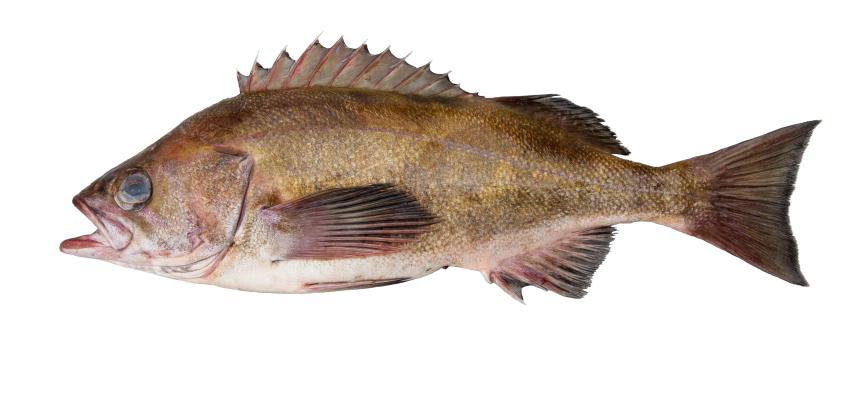Description and Range
Physical description
The body of the Widow Rockfish is elongate and compressed with reduced head spines. The head is relatively short, with a lower jaw that projects slightly and a relatively small mouth. Underwater adults are various shades of brown to brassy orange and get lighter ventrally. Some have dusky patches or saddles that are not apparent after capture. The fin membranes, particularly the anal and pectoral fins, are black. The caudal peduncle is narrow and the anal fin has a strong posterior slant, angling towards the caudal fin. Individuals smaller than 10 inches in length are lighter in color and are tinged with vague streaks of orange. Juveniles often have distinct, dark saddles on their backs and sides.
Similar species to the Widow Rockfish are the Yellowtail Rockfish, Speckled Rockfish, and Bank Rockfish. Widows may be differentiated from these species by fin membrane coloration and anal fin slant (black fin membranes and a posterior slant in Widows, yellow fin membranes and a perpendicular anal fin in Yellowtails), presence or absence of distinct body spots (Speckled have numerous dark spots/speckles on the body, Widows do not have these spots), and lateral line coloration (nondescript in Widows, highlighted reddish-pink in Banks).
Widow Rockfish can grow up to 62 cm (24.4 in) in length and 3.0 kg (6.6 lb) in weight. Maximum age is at least 60 years old.
Geographic range
Widow Rockfish range from the Albatross Bank in the western Gulf of Alaska, to Todos Santos Bay, in northern Baja California. Adults have been captured at water depths from 0 to 800 m (0-2625 ft), although they are most commonly found from shallow waters to 200 m (0-656 ft).
